Simulation Standard Technical Journal
A Journal for Process and Device Engineers
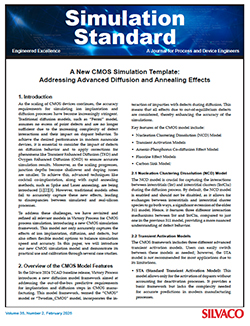
A New CMOS Simulation Template: Addressing Advanced Diffusion and Annealing Effects
As the scaling of CMOS devices continues, the accuracy requirements for simulating ion implantation and diffusion processes have become increasingly stringent.
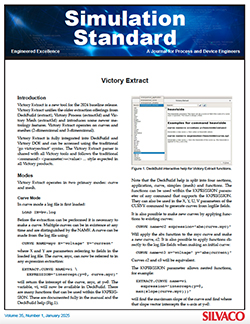
Introduction to Virtual Metrology with Victory Extract
Victory Extract is a new tool for the 2024 baseline release. Victory Extract unifies the older extraction offerings from DeckBuild (extract), Victory Process (extract3d) and Victory Mesh (extract3d) and introduces some newer metrology features.
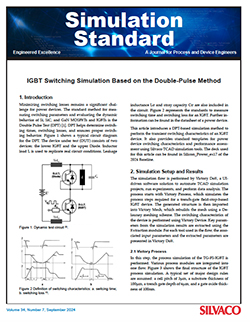
IGBT Switching Simulation Based on the Double-Pulse Method
This article introduces a DPT-based simulation method to perform the transient switching characteristics of an IGBT device. It also provides standard templates for power device switching characteristics and performance assessment using Silvaco TCAD simulation tools. The deck used for this article can be found in Silicon_Power_ex17 of the 2024 Baseline.

2024 TCAD Baseline Release
- Section 1: Process Simulation – New Features in 2024 Baseline Release
- Section 2: Device Simulation – New Features in 2024 Baseline Release
- Section 3: Victory DoE – New Features in 2024 Baseline Release
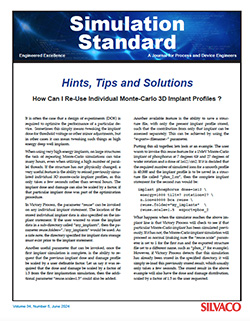
How Can I Re-Use Individual Monte-Carlo 3D Implant Profiles?
It is often the case that a design of experiments (DOE) is required to optimize the performance of a particular device. Sometimes this simply means tweaking the implant dose for threshold voltage or other minor adjustments, but in other cases it can mean tweaking such things as high energy deep well implants.
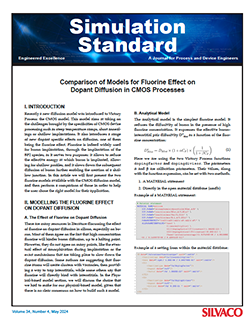
Comparison of Models for Fluorine Effect on Dopant Diffusion in CMOS Processes
Recently a new diffusion model was introduced to Victory Process: the CMOS model. This model aims at taking on the challenges brought by the specificities of CMOS device processing such as steep temperature ramps, short annealings or shallow implantations.

